Haier SG70508D1000 User manual
- Category
- Mobile phones
- Type
- User manual
This manual is also suitable for

Thanks for purchasing Haier mobile phones, which are a combination of the
essence of high technology, stylish designs and a plenty of functions. They
are expected to bring endless funs to your life.
BeforetheuseofHaiermobilephones,pleasereadthisusers'guideandkeep
it carefully for further reference. This guide serves as an operation guide
instead of a quality warranty. Qingdao Haier Telecom Co.,Ltd reserves all
therightstointerprettypingerrorsinthisguide,inconsistencywiththelatest
materials and upgrading of soft wares and make changes at any time. Such
changeswilldirectlybeeditedintotheneweditionofusers'guidewithout
further notice.
This users' guide is edited and printed by Qingdao Haier Telecom Co .,Ltd.
Copyrights reserved! Quality guarantee to be held responsible for reprint!
Users' Guide

1
2
12
13
15
16
17
18
18
18
19
19
20
20
20
23
23
1. Parts of the Phone
1.1 Screen lcons
1.2 Install battery and UIM card
1.3 Charge battery
1.4 Switch on/off
1.5 Dial a number
1.6 End a call
1.7 Redial a number
1.8 Make an international calls
1.9 During a phone call
2. Operation of menu
2.1 Names
2.1.1 Using the Keypad to Enter Information
2.1.2 Editing Names
2.1.2.1 list
Important notes
FCC SAR
CONTENTS
1

23
23
24
24
24
25
25
25
26
26
27
28
29
29
30
30
30
2 New
2.1.2.3 Search
2.1.3 Multicopy
2.1.4 Groups
2.1.5 Erase All
2.1.6 Speed Dial
2.1.7 Memory state
2.1.8 My number
2.2 Messages
2.2.1 Write Message
2.2.2 Inbox
2.2.3 Outbox
2.2.4 Draft
2.2.5 Templates
2.2.6 Erase Msgs
2.2.7 Voice Mail
2.2.8 Settings
2.1.2.
2

32
33
33
33
33
34
34
36
36
37
37
38
38
39
39
39
43
3
2.2.9 Multimedia Box
2.3 Call Logs
2.3.1 Missed
2.3.2 Received Call
2.3.3 Dialled Call
2.3.4 Erase Lists
2.3.5 Call Timers
2.4 Tools
2.4.1 Schedule
2.4.2 Alarm Clock
2.4.3 Calculator
2.4.4 Tip Calculator
2.4.5 Stop Watch
2.5 Settings
2.5.1 Ringers
2.5.2 Profiles
2.5.3 Display

43
44
45
45
46
47
47
48
49
50
53
4
2.5.4 Security
2.5.5 Call Setup
2.5.6 Phone Info
2.5.7 Key guard
2.5.8 Network Service
2.6 Amusement
2.6.1 Kong Ming
2.7 TATA Zone
4
. Trouble shooting
. Maintenances and repairs
5
3. Input method

1
Important notes
Do not use the mobile phone without hand-free settings while driving. Please stop your car
before you want to use your phone.
Do not use your phone at filling stations or the areas with inflammables and explosive products
or chemicals.
Mobile phones will cause interference. Using mobile phones on the plane is both a danger and
a violation of laws.
Switch off your phone when you are close to medical equipments and follow all the existing
provisions.
Follow the special rules of relative places. Please switch off your phone where the use of
mobile phones is forbidden or may cause interference or dangers (for example,in the hospital).
Use your phone normally (near your ears). Do not touch the wire without reason after switching
off your phone.
You can dial emergency calls anytime, even the PIN/PUK locked, no UIM card or the phone
locked.Input local emergency number and press send key.
The Emergency call number are 100/101/102/12524.
Please follow the following rules before you use the phone. Otherwise, it may result in
dangers or make you violate laws.
Follow traffic regulations
Switch off your phone at filling stations
Switch off your phone on the plane
Switch off your phone in the hospital
Special provisions
Careful Use
Emergency calls

FCC SAR
This chapter addresses the safety guidelines and precautions to follow when operating your phone.
Please make sure to be aware of all the details about the safety to operate your phone in the way that
you are supposed to.
Before operating your phone, please be aware of all the safety details.
SAFETY INFORMATION FOR WIRELESS
HANDHELD PHONES
SAFETY INFORMATION FOR FCC RF EXPOSURE
SAR INFORMATION
FDA CONSUMER UPDATE
PROTECT YOUR WARRANTY
12 MONTHS LIMITED WARRANTY
2

Read This Information Before Using Your Handheld
Portable Cellular Telephone
EXPOSURE TO RADIO FREQUENCY SIGNALS
Your wireless handheld portable telephone is a low power radio transmitter and receiver. When it is ON,
it receives and also sends out radio frequency (RF) signals.
In August 1996, the Federal Communications Commissions (FCC) adopted RF exposure guidelines with
safety levels for handheld wireless phones. Those guidelines are consistent with the safety standards
previously set by both U.S. and international standards bodies:
ANSI C95.1 (1992) *
NCRP Report 86 (1986) *
ICNIRP (1996) *
Those standards were based on comprehensive and periodic evaluations of the relevant scientific
literature. For example, over 120 scientists, engineers, and physicians from universities, government
health agencies, and industry reviewed the available body of research to develop the ANSI Standard
(C951).
The design of your phone complies with the FCC guidelines (and those standards).
3

ANTENNA CARE
Use only the supplied or an approved replacement antenna.
Unauthorized antennas, modifications, or attachments could damage the phone and may violate FCC
regulations.
1* : American National Standards Institute.
2* : National Council on Radiation protection and measurements.
3* : International Commission on Nonionizing Radiation Protection.
Talking on the phone while driving is extremely dangerous and is illegal in some states. Remember,
safety comes first. Check the laws and regulations on the use of phones in the areas where you drive.
Always obey them.
Also, if using your phone while driving, please:
Give full attention to driving. Driving safely is your first responsibility.
Use hands-free operation, if available.
Pull off the road and park before making or answering a call, if driving conditions so require.
DRIVING SAFETY
4

If you must use the phone while driving, please use one-touch, speed dialing, and auto answer modes.
An airbag inflates with great force. DO NOT place objects, including both installed or portable wireless
equipment, in the area over the airbag or in the air bag deployment area. If in-vehicle wireless equipment
is improperly installed and the air bag inflates, serious injury could result.
: Failure to follow these instructions may lead to serious personal injury and possible property
damage.
WARNING
5

ELECTRONIC DEVICES
) inches
be maintained between a handheld
ALWAYS keep the phone more than six inches from your pacemaker when the phone is turned on.
Do not carry the phone in a breast pocket.
Use the ear opposite the pacemaker to minimize the potential for interference.
If you have any reason to suspect that interference is taking place, turn your phone OFF immediately.
OTHER MEDICAL DEVICES
obtaining this information.
Turn your phone OFF in healthcare facilities when any regulations posted in these areas instruct you to
do so. Hospitals or healthcare facilities may be using equipment that could be sensitive to external RF
energy.
Most modern electronic equipment is shielded from RF energy.
However, certain electronic equipment may not be shielded against the RF signals from your wireless
phone.
PACEMAKERS
The Health Industry Manufacturers Association recommends that a minimum separation of six (6"
wireless phone and a pacemaker to avoid potential interference
with the pacemaker. These recommendations are consistent with the independent research by and
recommendations of Wireless Technology Research.
Persons with pacemakers :
If you use any other personal medical device, consult the manufacturer of your device to determine if
they are adequately shielded from external RF energy Your physician may be able to assist you in
6

POSTED FACILITIES
OTHER SAFETY GUIDELINES
AIRCRAFT
BLASTING AREAS
POTENTIALLY EXPLOSIVE ATMOSPHERES
Turn your phone OFF where posted notices so require.
FCC and Transport Canada Regulations prohibit using your phone while in the air. Turn your phone
OFF before boarding an aircraft.
To avoid interfering with blasting operations, turn your phone OFF when in a "blasting area" or in areas
posted: "Turn off two-way radio". Obey all signs and instructions.
Turn your phone OFF when in any area with a potentially explosive atmosphere and obey all signs and
instructions. Sparks in such areas could cause an explosion or fire resulting in bodily injury or even death.
fueling areas such as gas stations ; below deck on boats ; fuel or chemical transfer or storage facilities;
vehicles using liquefied petroleum gas (such as propane or butane); areas where the air contains
chemicals or articles, such as grain, dust, or metal powders; and any other area where you would
normally be advised to turn off your Vehicle's engine.
Areas with a potentially explosive atmosphere are often, but not always,clearly marked. They include
7

PRECAUTIONS
Your Handheld Portable Telephone is a high quality piece of equipment. Before operating, read all instructions
and cautionary markings on (1) AC Adaptor (2) Battery and (3) Product Using Battery.
DO NOT use this equipment in an extreme environment where high temperature or high humidity
exists.
DO NOT abuse the equipment. Avoid striking, shaking or shocking. When not using, lay down the
unit to avoid possible damage due to instability.
DO NOT expose this equipment to rain or spilled beverages.
DO NOT use unauthorized accessories.
DO NOT disassemble the phone or its accessories. If service or repair is required, return unit to
an authorized Audiovox cellular service center. If unit is disassembled, the risk of electric shock or
fire may result.
DO NOT short-circuit the battery terminals with metal items etc.
8

WARNING! Read this Information before using
CAUTIONS
BODY-WORN OPERATION
In August 1996 the Federal Communications Commossion (FCC) of the United States with its action in
Report and Order FCC 96-326 adopted an updated safety standard for human exposure to radio
consistent with the safety standard previously set by both U.S. and international standards bodies.
The design of this phone complies with the FCC guidelines and these international standards.
Use only the supplied or an approved antenna. Unauthorized antennas, modifications, or attachments
could impair call quality, damage the phone, or result in violation of FCC regulations.
Do not use the phone with a demaged antenna. If a demaged antenna comes into contact with the skin,
a minor burn may result. Please contact your local dealer for replacement antenna.
Thisdevicewastestedfortypicalbody-wornoperationswiththebackofthephonekept
1
.5cm.from
the body. To maintain compliance with FCC RF exposure requirements, use only belt-clips, holsters or
similaraccessoriesthatmaintaina
1
.5cm.separationdistancebetweentheuser'sbodyandtheback
of the phone, including the antenna. The use of belt-clips, holsters and similar accessories should not
contain metallic components in its assembly.
TheuseofaccessoriesthatdonotsatisfytheserequirementsmaynotcomplywithFCCRFexposure
requirements, and should be avoided.
frequency electromagnetic energy emitted by FCC regulated transmitters. Those guidelines are
NOTE : For more information about RF exposure, please visit the FCC website at www.fcc.gov
9

THIS MODEL PHONE MEETS THE GOVERNMENT 'S REQUIREMENTS FOR EXPOSURE TO
RADIO WAVES.
Your wireless phone is a radio transmitter and receiver. It is designed and manufactured not to exceed
the emission limits for exposure to radiofrequency (RF) energy set by the Federal Communications
Commission of the U.S. Government. These limits are part of comprehensive guidelines and establish
permitted levels of RFenergy for the general population. The guidelines are based on standards that
were developed by independent scientific organizations through periodic and thorough evaluation of
scientific studies. The standards include a substantial safety margin designed to assure the safety of all
persons, regardless of age and health.
The exposure standard for wireless mobile phones employs a unit of measurement known as the
Specific Absorption Rate, or SAR. The SAR limit set by the FCC is 1.6 W
with the phone transmitting at its highest certified power level in all tested frequency bands.
Although the SAR is determined at the highest certified power level, the actual SAR level of the phone
you are to a wireless base station antenna, the lower the power output.
Before a phone model is available for sale to the public, it must be tested and certified to the FCC that
it does not exceed the limit established by the governmentadopted requirement for safe exposure. The
/kg. * Tests for SAR are
conducted
while operating can be well below the maximum value. This is because the phone is designed to operate
at multiple power levels so as to use only the power required to reach the network. In general, the closer
10


The illustration below shows the main components of your phone.
(in the text boxes in the picture below, type in names of the major components)
1. Parts of the Phone
1
2
3
4
5
6
7
8
9
0
GHI
ABC
DEF
JKL
MNO
PQRS
TUV
WXYZ
Receiver
LCD screen
Soft key
Send
Up/down key
Soft key
End
# key
key
*
Microphone
12

(type in descriptions of the phone's components in the table below)
Up/down key Use up/down to navigate in menus
Send key Use this key to dial, or answer a call
End key Use this key to end a call, or turn power on/off
Soft key (left) Use this key to select or confirm something
Soft key (right) Use this key to cancel something
Alphanumeric keypad Use these keys to input numbers, or characters
Key Description
(insert all of the screen icons in the table below--or instead of using the table, insert a sample
LCD screen with call-outs showing each of the possible screen icons)
When the phone is powered on, the following icons may display:
1.1 Screen Icons
13

Indicate the strength of rssi
Indicate the alarm is set
Indicate the level of battery
Indicate call forward enabled
Indicate the phone is in a call
Indicate new message's arrival
Indicate new urgent message
Indicate voice mail
Indicate phone is in roaming
Indicate all kinds of phone mode
No ring
Ring
DescriptionIcon
( )
14

aim the protruding part at the bottom of the battery at the bottom of phone.
push the top part of the battery to the phone and press down the lock until it is locked.
Switch off the phone, push up the lock at the bottom of the battery to uplift the top of the battery
and separate with the main machine.
Purchase a UIM card from network operator. Your phone number and registration information
are stored in your UIM card. Your UIM card can be used in any a CDMA phone. Your number and
information will not change.
Make sure to switch off your phone before take out the battery.
Make the metal face of the UIM card down and put it conferring the bevel of the card.
Cover the sheet metal used for fixing and install the battery.
1.2 Install battery and UIM card
Install the battery
Take out the battery
Install UIM card
15
Page is loading ...
Page is loading ...
Page is loading ...
Page is loading ...
Page is loading ...
Page is loading ...
Page is loading ...
Page is loading ...
Page is loading ...
Page is loading ...
Page is loading ...
Page is loading ...
Page is loading ...
Page is loading ...
Page is loading ...
Page is loading ...
Page is loading ...
Page is loading ...
Page is loading ...
Page is loading ...
Page is loading ...
Page is loading ...
Page is loading ...
Page is loading ...
Page is loading ...
Page is loading ...
Page is loading ...
Page is loading ...
Page is loading ...
Page is loading ...
Page is loading ...
Page is loading ...
Page is loading ...
Page is loading ...
Page is loading ...
Page is loading ...
Page is loading ...
Page is loading ...
-
 1
1
-
 2
2
-
 3
3
-
 4
4
-
 5
5
-
 6
6
-
 7
7
-
 8
8
-
 9
9
-
 10
10
-
 11
11
-
 12
12
-
 13
13
-
 14
14
-
 15
15
-
 16
16
-
 17
17
-
 18
18
-
 19
19
-
 20
20
-
 21
21
-
 22
22
-
 23
23
-
 24
24
-
 25
25
-
 26
26
-
 27
27
-
 28
28
-
 29
29
-
 30
30
-
 31
31
-
 32
32
-
 33
33
-
 34
34
-
 35
35
-
 36
36
-
 37
37
-
 38
38
-
 39
39
-
 40
40
-
 41
41
-
 42
42
-
 43
43
-
 44
44
-
 45
45
-
 46
46
-
 47
47
-
 48
48
-
 49
49
-
 50
50
-
 51
51
-
 52
52
-
 53
53
-
 54
54
-
 55
55
-
 56
56
-
 57
57
-
 58
58
Haier SG70508D1000 User manual
- Category
- Mobile phones
- Type
- User manual
- This manual is also suitable for
Ask a question and I''ll find the answer in the document
Finding information in a document is now easier with AI
Related papers
-
Haier D1200 User manual
-
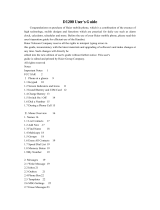 Haier Telecom (Qingdao) D1200 User manual
Haier Telecom (Qingdao) D1200 User manual
-
Haier D2100 User manual
-
Haier D1000 User manual
-
Haier C1100 SKYLINK User manual
-
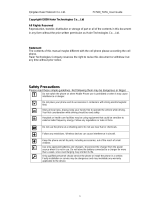 Haier Telecom (Qingdao) FC500 TATA User manual
Haier Telecom (Qingdao) FC500 TATA User manual
-
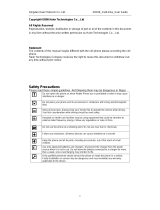 Haier Telecom (Qingdao) D2100 User manual
Haier Telecom (Qingdao) D2100 User manual
-
Haier C2040 User manual
-
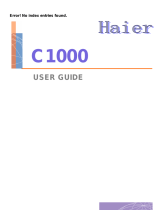 Haier Telecom (Qingdao) SG70512C1000 User manual
Haier Telecom (Qingdao) SG70512C1000 User manual
-
Haier C1000 User manual
Other documents
-
Alcatel OT-E206C User manual
-
Alcatel OT-S522C User manual
-
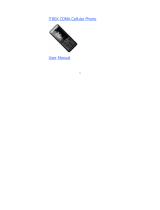 Cal-Comp Electronics & Communications iT80X User manual
Cal-Comp Electronics & Communications iT80X User manual
-
Alcatel OT-V212C User manual
-
LG LG235.AINDTN Owner's manual
-
LG LGUD636 Owner's manual
-
Pantech PS-300 User manual
-
LG LGUD820 Owner's manual
-
Samsung SCH-X609 User manual
-
ZTE C350 User manual






























































